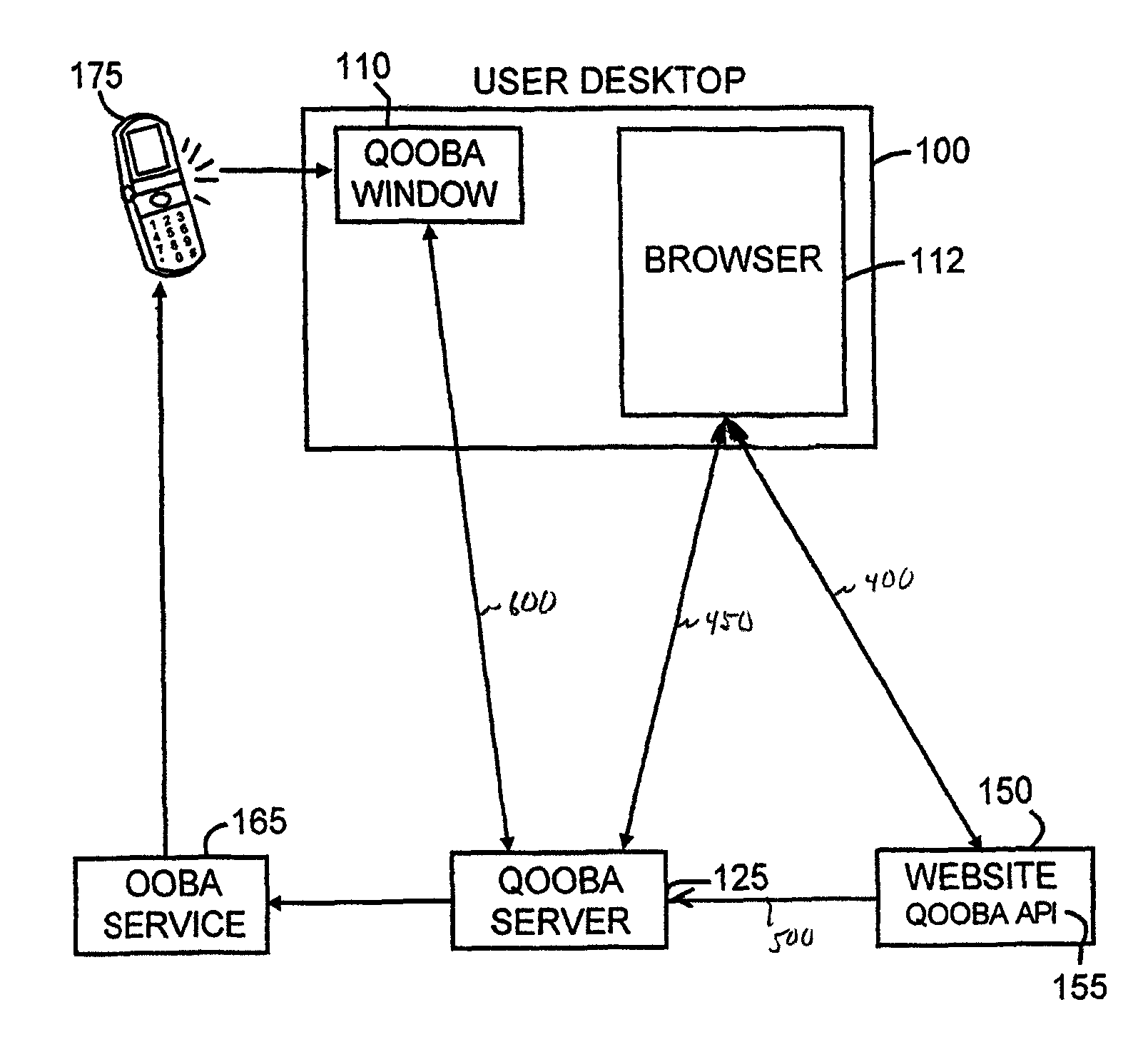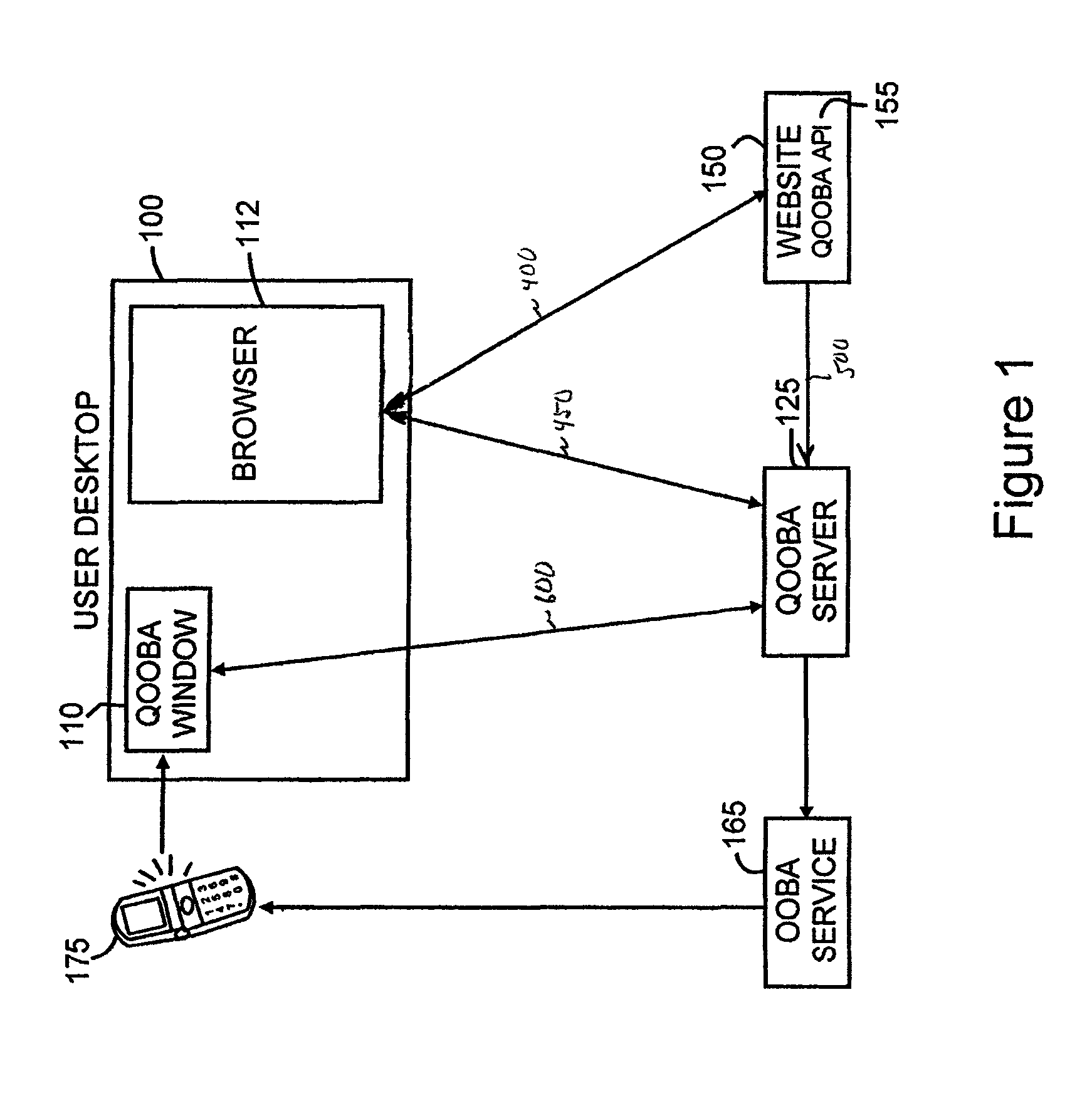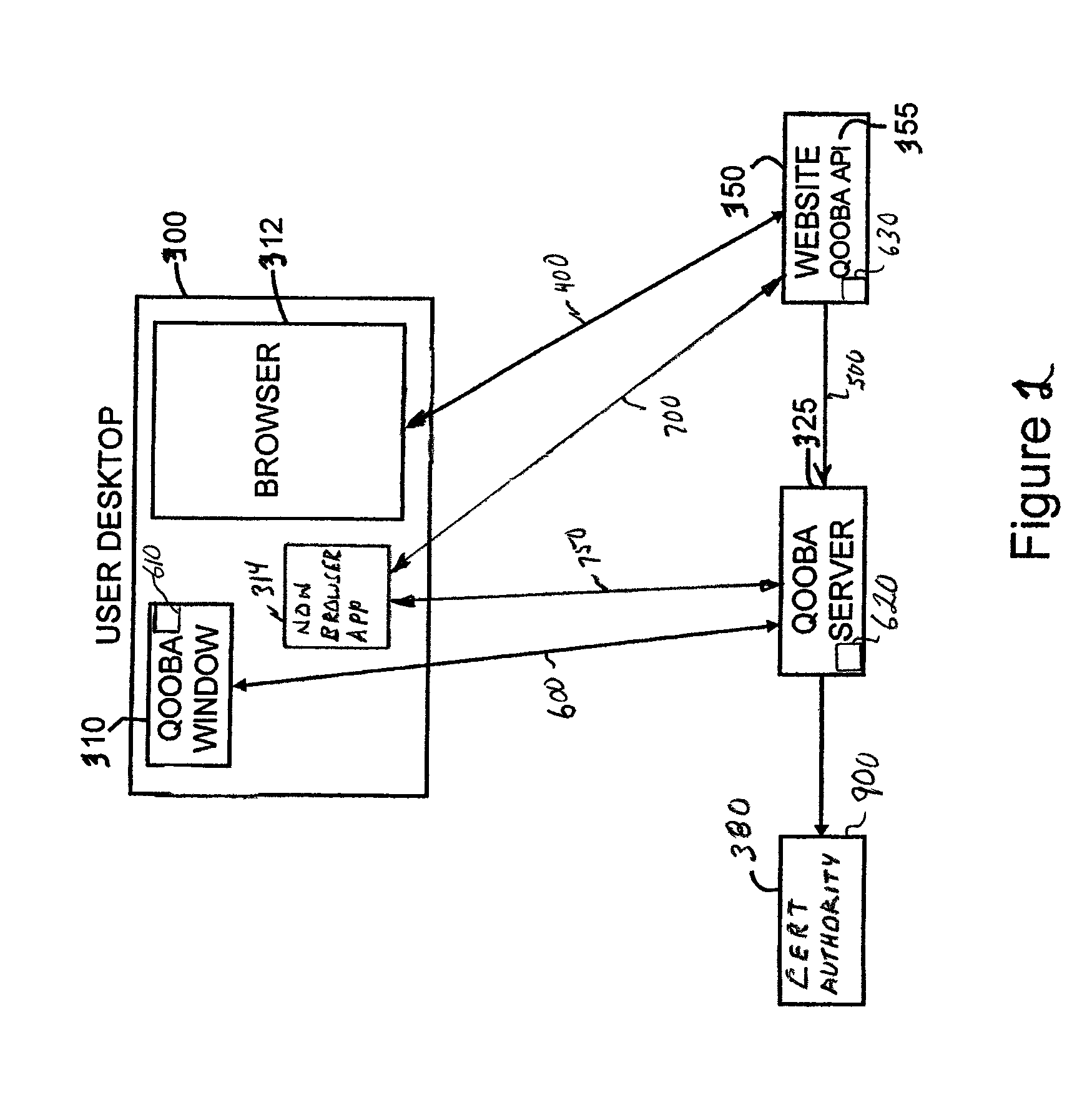Key management using quasi out of band authentication architecture
a key management and quasi-out-of-band authentication technology, applied in the field of security and privacy, can solve the problems of increasing the difficulty of initial login authentication, the inability to use approaches inherently difficult, and the inability to meet the requirements of key managemen
- Summary
- Abstract
- Description
- Claims
- Application Information
AI Technical Summary
Benefits of technology
Problems solved by technology
Method used
Image
Examples
Embodiment Construction
[0033]General Overview of Prior Work Related to QOOBA
[0034]In prior work we have described how the introduction of a network based security server, which has an independent channel to a window displayed on a user device, can be used in conjunction with a user's browser, computer software or smart phone or other mobile communications device application, and the website they are visiting to provide user authentication for login or transaction authorization via one or more user network device.
[0035]QOOBA is an innovative approach to create a solution that can be used to authenticate every transaction in a manner that will feel natural to users. The central idea is to create a small secure window, the QOOBA Window, that has an independent encrypted channel to a secure server (the QOOBA Server). The QOOBA Window can be implemented as a zero-download browser pop-up (the QOOBA Pop-up Window), as a small desktop application (the QOOBA Software Window) or as an app on a smart phone (the QOOB...
PUM
 Login to View More
Login to View More Abstract
Description
Claims
Application Information
 Login to View More
Login to View More - R&D
- Intellectual Property
- Life Sciences
- Materials
- Tech Scout
- Unparalleled Data Quality
- Higher Quality Content
- 60% Fewer Hallucinations
Browse by: Latest US Patents, China's latest patents, Technical Efficacy Thesaurus, Application Domain, Technology Topic, Popular Technical Reports.
© 2025 PatSnap. All rights reserved.Legal|Privacy policy|Modern Slavery Act Transparency Statement|Sitemap|About US| Contact US: help@patsnap.com



